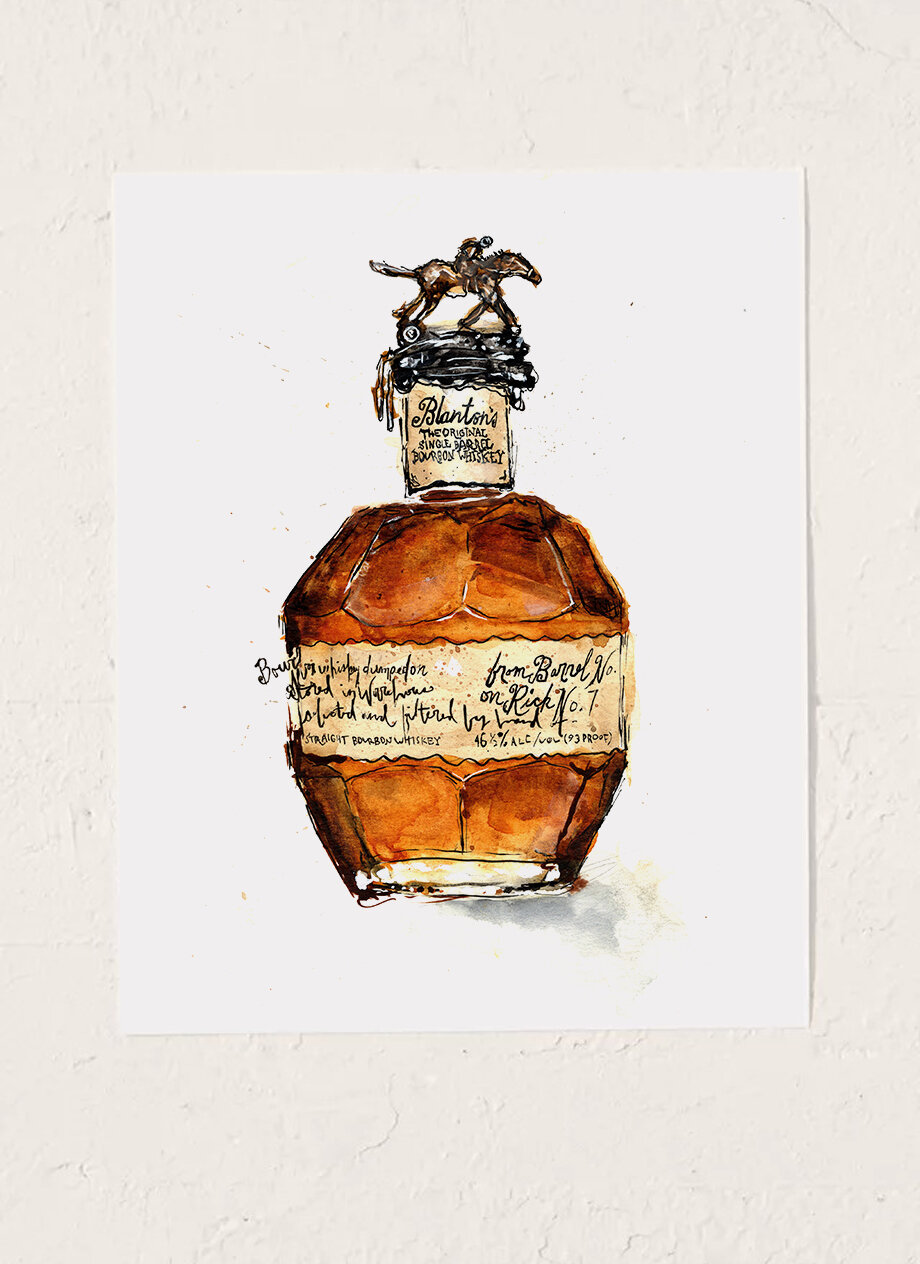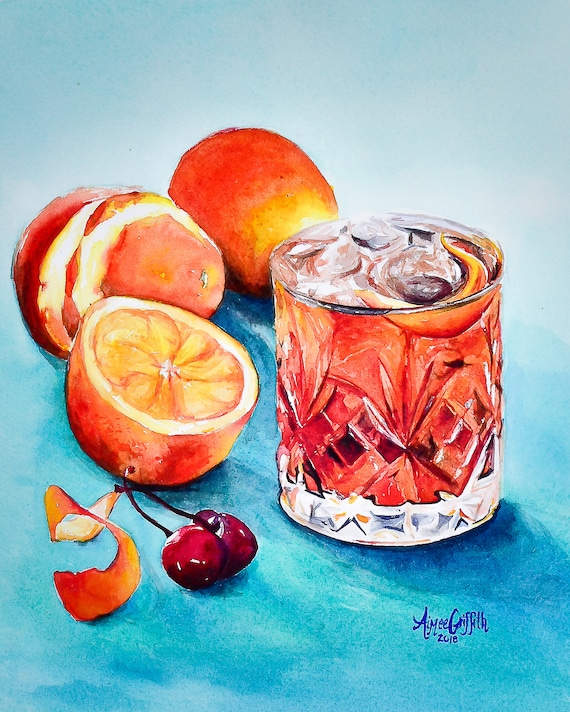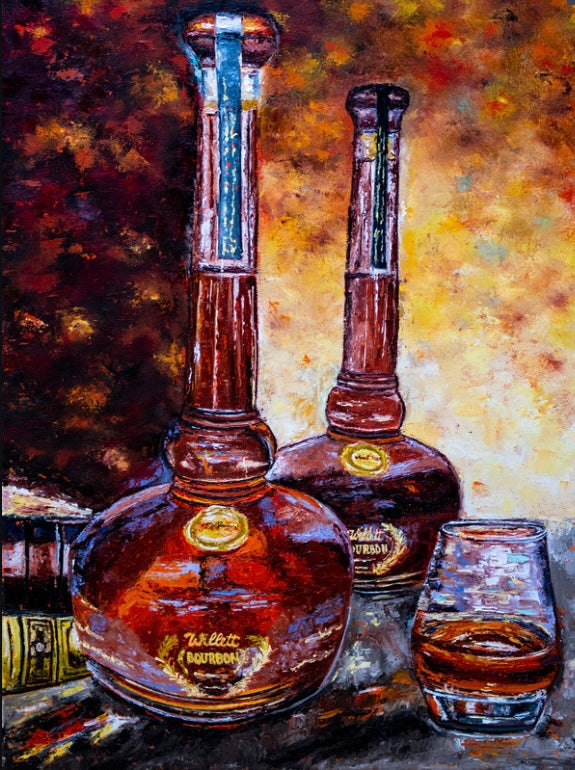Limited Edition: Discover Exclusive Bourbon Art Parts for Collectors
Recording the Essence of Bourbon Art With Unique Aesthetic Depictions and Styles
The art of bourbon extends beyond the fluid itself, materializing through a variety of aesthetic depictions that encapsulate its fabled heritage and workmanship. What continues to be to be revealed is exactly how these progressing designs mirror not just the bourbon itself yet additionally the transforming landscape of creative interpretation. Limited Edition.
The Background of Whiskey Art

As scotch manufacturing spread, so as well did the wish to boost its experience via art. From the intricate inscriptions on early casks to the fancy tags of modern-day containers, each aspect mirrors an one-of-a-kind creative vision, functioning as an aesthetic narrative of the whiskey's heritage.
In the 18th and 19th centuries, the rise of the commercial revolution better enhanced scotch art, causing innovative packaging and advertising that recorded customer attention. Musicians and designers started try out aesthetic appeals, imbuing whiskey-related images with symbolic definitions that communicated ideas of workmanship, custom, and neighborhood.
Today, bourbon art proceeds to develop, mixing standard approaches with modern art types. Realism Art. This continuous dialogue in between the spirit and its graph emphasizes the enduring bond between whiskey and society, enhancing the total experience for fanatics worldwide
Iconic Bottle Layouts
While many aspects contribute to the appeal of whiskey, legendary bottle layouts play an essential duty fit customer perception and enhancing the total experience. The visual presentation of whiskey containers is not simply a visual consideration; it functions as a bridge between the product and the consumer, stimulating emotions and setting expectations.
Distinctive shapes, materials, and closures can elevate a scotch brand's identity, making it immediately recognizable on jampacked racks. The classic Glenfiddich container, with its classy conical silhouette, communicates a feeling of custom and craftsmanship, while the bold, modern design of the Balvenie bottle mirrors innovation and sophistication. In addition, making use of colored glass or special structures can suggest the top quality and personality of the scotch within.
Legendary layouts frequently integrate components of cultural heritage, signifying the brand name's history and connection to its origins. Brands like Jack Daniel's use an uncomplicated, robust design that resonates with its American bourbon heritage. Ultimately, the influence of bottle design prolongs beyond mere performance; it encapsulates the essence of the brand, welcoming consumers to explore and delight in the abundant tapestry of scotch society.
Tag Art Work and Branding
Container layouts typically establish the stage of what customers can anticipate, yet tag art work and branding play an equally significant function in connecting a bourbon's identity. The tag serves as the first point of contact between the item and the customer, enveloping the significance of the scotch within its aesthetic components.
Efficient tag art work incorporates color, typography, and imagery to create a narrative that resonates with the brand's heritage and target audience. A label including vintage fonts and complex pictures may evoke a sense of custom and craftsmanship, appealing to aficionados. On the other hand, strong colors and contemporary layout aspects could draw in a more youthful group seeking innovation and exhilaration.


Photography and Visual Storytelling
Recording the essence of bourbon with photography and visual storytelling is an art kind that boosts the brand experience. This tool goes beyond simple product depiction, delving right into the complex stories that surround each container. By employing engaging imagery, digital photographers can evoke feelings that resonate with consumers, eventually building a much deeper connection to the scotch brand name.
Visual narration in bourbon photography often utilizes abundant textures, illumination, and structure to highlight the unique characteristics of the spirit. The interaction of light and web darkness can accentuate the brownish-yellow hues of whiskey, while the selection of history components-- such as rustic barrels or elegant glassware-- can strengthen the brand's heritage or lifestyle organizations.
Moreover, catching the ceremonial elements of whiskey usage, from the pouring to the sampling, invites audiences into a sensory experience, enabling them to visualize the tastes and aromas that wait for. Each photo not just showcases the product however additionally informs a story of workmanship, tradition, and the moments that scotch can improve - Whiskey Art. Therefore, photography comes to be a powerful device in articulating the identity of bourbon brand names, positioning them within the wider social landscape
Emerging Trends in Bourbon Art
The development of bourbon art is significantly shaped by modern fads that mirror wider social shifts and consumer preferences. This change not only highlights the importance of sustainability yet additionally boosts the story bordering whiskey production.
Furthermore, digital art has surged in appeal, allowing for cutting-edge depictions of scotch. Artists are leveraging innovation to craft immersive experiences, such as enhanced truth installations that involve audiences and offer a deeper understanding of whiskey's cultural significance. This pattern likewise includes social networks platforms, where visually striking material amasses attention and promotes area amongst fanatics.
Moreover, partnerships between scotch brands and musicians are ending up being much more prevalent. These partnerships produce limited-edition product packaging designs and special art work that commemorate both the workmanship of scotch and the creative thinking of musicians. As scotch art proceeds to evolve, these emerging fads will certainly shape its future, cultivating a dynamic junction of society, sustainability, and modern technology within the bourbon community.
Verdict
Finally, the art of scotch incorporates his explanation a varied range of visual depictions that reflect its abundant heritage and craftsmanship. From iconic container styles and intricate tag artwork to engaging digital photography, each component adds to a broader narrative that boosts the customer's experience. As emerging fads, such as digital art and sustainability, remain to form this creative landscape, the multifaceted identity of whiskey continues to be an enduring source of social connection and exploration.

In final thought, the art of bourbon encompasses a varied variety of visual depictions that mirror its rich heritage and workmanship.